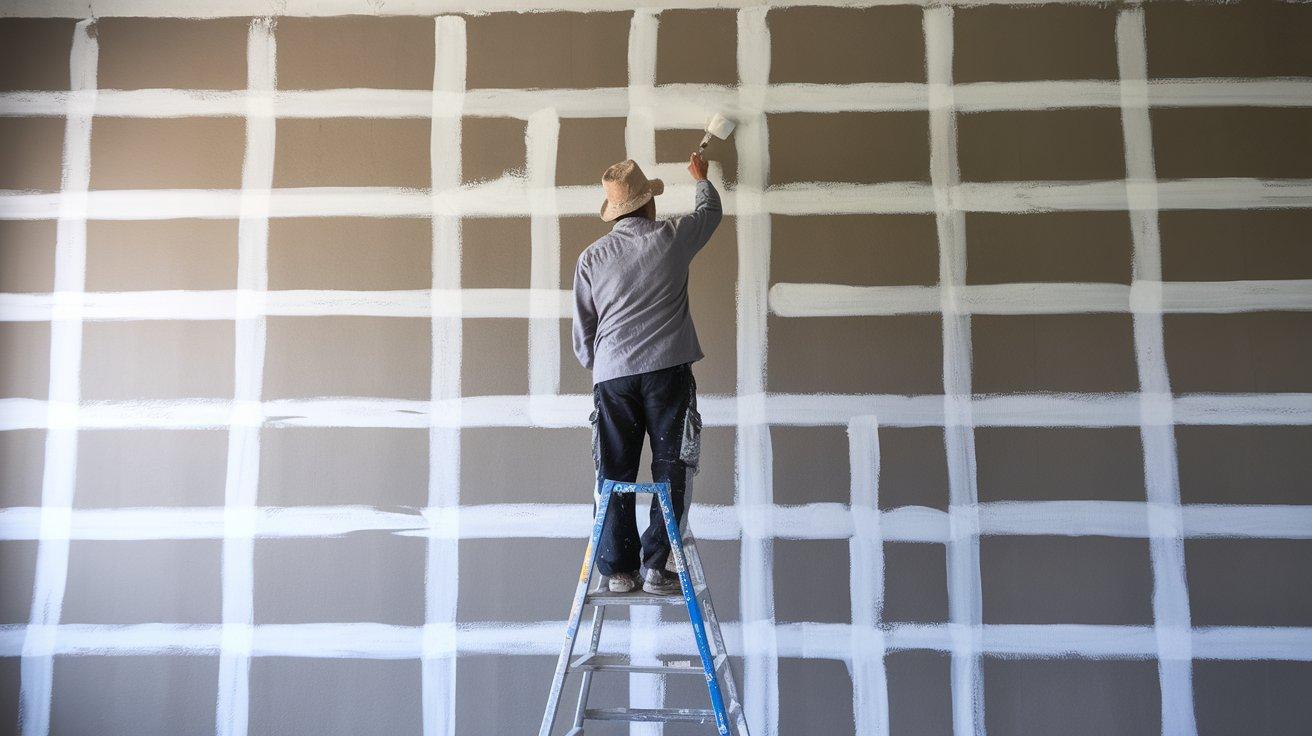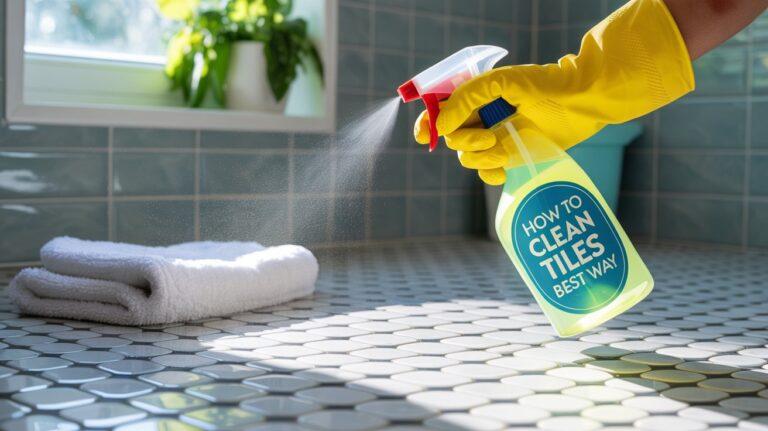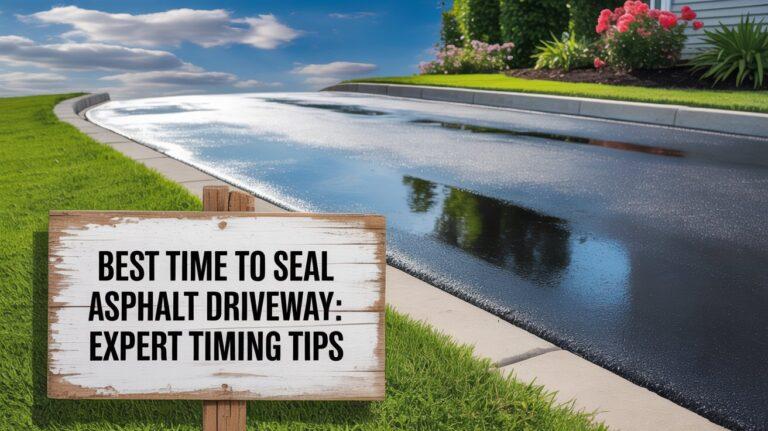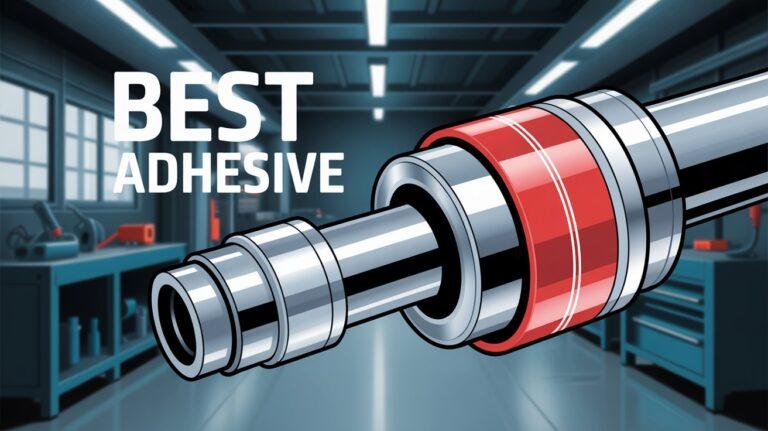Can You Paint Over Sealed Concrete?

Painting sealed concrete might sound like a simple task — but if you skip the prep work, your paint job could peel or flake within weeks. Whether you’re upgrading your garage floor, basement, patio, or even a sealed concrete countertop, the key to success is surface prep and choosing the right products.
Let’s dive into everything you need to know to get a durable, professional-looking paint finish on sealed concrete — including product suggestions, troubleshooting tips, and step-by-step instructions.

Why Sealed Concrete Is Tricky to Paint
Sealers are designed to protect concrete from moisture, oil, chemicals, and wear. But the same qualities that protect concrete also make it resistant to paint.
Sealed concrete is typically:
- Non-porous: Paint can’t soak in.
- Smooth/slippery: Poor surface grip.
- Hydrophobic: Moisture (and paint) just slides off.
That’s why paint adhesion fails on unprepared sealed surfaces — it sits on top rather than bonding.
How to Test If Your Concrete Is Sealed
Before anything, test the surface:
- Pour a small amount of water onto the concrete.
- Watch what happens:
- If the water beads up: The surface is sealed.
- If it soaks in quickly: The surface is unsealed and can be painted without etching.
- If the water beads up: The surface is sealed.
Pro tip: Some older sealers may wear off unevenly — test multiple areas!
Supplies & Tools You’ll Need
Here’s your basic checklist for painting sealed concrete:
| Item | Purpose |
| Degreaser / Concrete Cleaner | Removes dirt and oils |
| Pressure washer (optional) | For deep cleaning |
| Concrete Etcher (e.g., muriatic acid or phosphoric acid) | Opens the surface for paint |
| Mechanical Grinder or Sander | Alternative to chemical etching |
| Concrete Bonding Primer | Improves adhesion |
| Epoxy or Acrylic Concrete Paint | Durable surface coat |
| Paint Roller with Extension Pole | Easier application |
| Sealer (optional) | For extra protection |
| Gloves, Mask, Eye Protection | Safety first! |
How to Paint Over Sealed Concrete – Full Step-by-Step
1. Clean Thoroughly
Remove dust, dirt, and oils. Use a concrete cleaner or degreaser, scrub with a stiff brush, or power wash if needed. Let dry fully.
Hidden grease or grime will cause bubbling or peeling later.
2. Remove or Etch the Sealer
This is the most important step for adhesion.
Option 1: Chemical Etching
Use a concrete etching solution to roughen the surface. Popular choices:
- Muriatic acid (strong but dangerous — use with caution)
- Phosphoric or citric-based etchers (safer, less harsh)
How to Etch:
- Mix and apply according to manufacturer’s instructions.
- Scrub with a stiff brush.
- Rinse thoroughly.
- Let dry 24–48 hours.
Option 2: Mechanical Grinding
Use a floor buffer or grinder with a diamond or carbide abrasive pad. This removes the top sealed layer and adds texture.
3. Apply Bonding Primer
Apply a concrete bonding primer to help the paint adhere to the surface. This is essential, especially after etching.
- Use a roller for even coverage.
- Let it dry fully (check label — usually 4–8 hours).
4. Paint with Epoxy or Masonry Paint
Pick a paint designed specifically for concrete — regular latex paint won’t last.
Best options:
- Epoxy Paint: Highly durable, best for garages and heavy-use areas.
- Acrylic Masonry Paint: Easier to apply, UV resistant (great for patios or walls).
Apply 2 coats:
- Use a roller for wide areas, brush for edges.
- Wait the full dry time between coats (usually 24 hours).
5. Seal the Paint (Optional but Recommended)
For extra protection, especially in wet or high-traffic areas, apply a clear concrete sealer over the paint.
- Choose a compatible sealer (water- or solvent-based)
- Wait until paint is fully cured (usually 5–7 days)
- Apply using a roller or sprayer
Pro Tips for a Long-Lasting Finish
- Check humidity: Paint during dry weather (ideal 50–80°F).
- Ventilation: Always work in a well-ventilated space.
- Avoid foot/vehicle traffic for at least 5–7 days after painting.
- Use anti-slip additives if applying to walkways or patios.
Mistakes to Avoid
- Painting over an unetched surface
- Skipping primer
- Using interior paint on floors
- Not letting the paint fully cure
- Painting in humid conditions
- Failing to clean after etching
FAQs
Can you paint sealed concrete patio floors?
Yes — but make sure to etch or grind the surface and use UV-resistant paint.
How long does paint last on sealed concrete?
With proper prep and sealing, 5–10 years. Without prep, it can peel in weeks.
Can I use regular wall paint?
No — wall paint won’t bond properly and will wear out quickly.
Final Thoughts
Can you paint over sealed concrete?
Yes — but only if you prep the surface right. A sealed concrete surface needs to be opened up (etched or ground), cleaned, primed, and painted with the correct products. Do it right, and your concrete surface can look brand new and stay that way for years.

I am Robert Sandin, a professional sealing expert with a diverse range of expertise. From concrete to various other materials, I possess in-depth knowledge and experience in the art of sealing. On my website, I offer valuable tips and expert recommendations on sealing techniques and products for different materials. Whether it’s concrete, wood, metal, or more, I am committed to providing you with the guidance you need for successful sealing projects.





